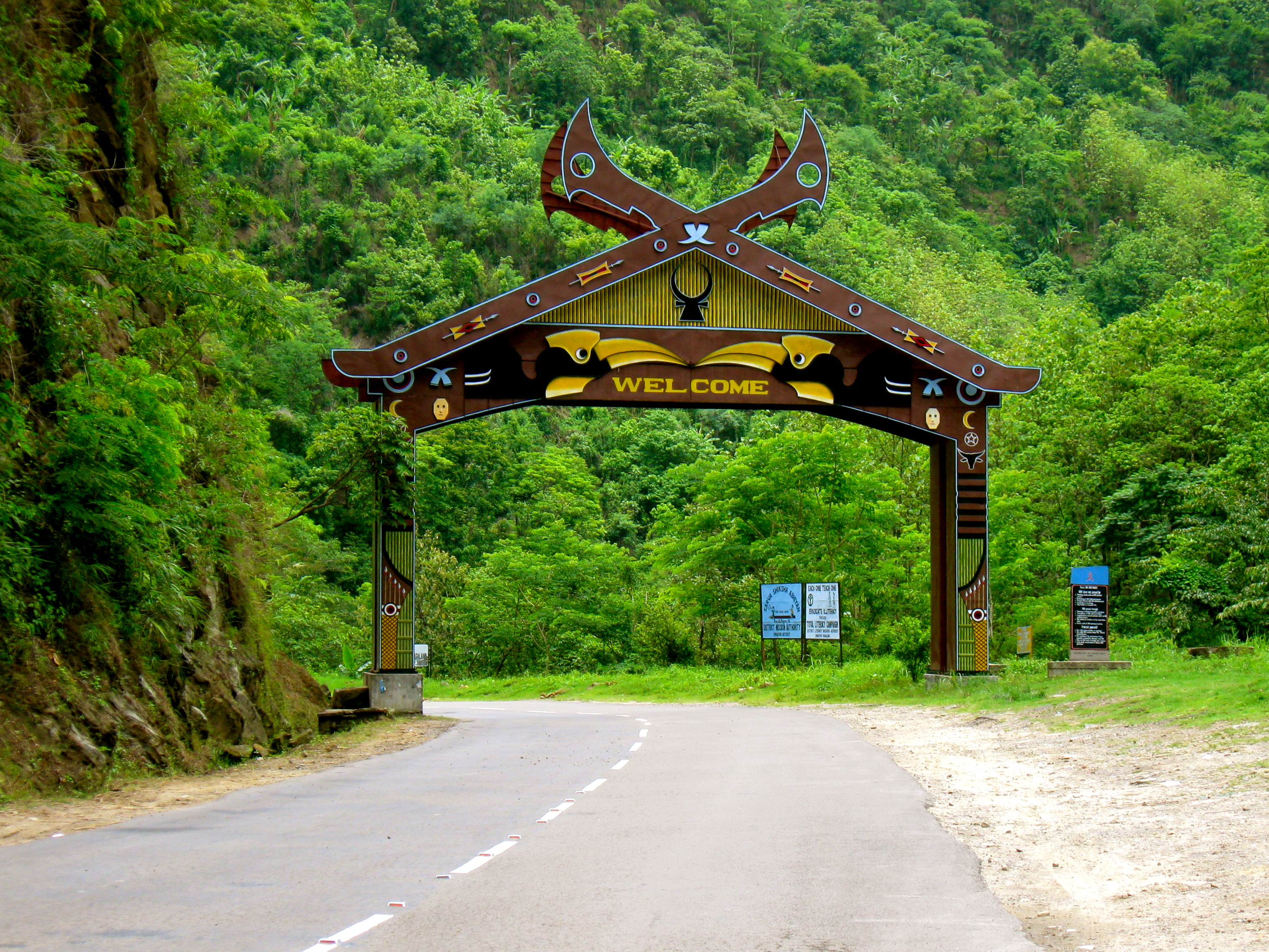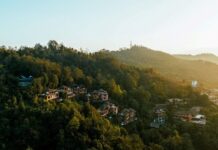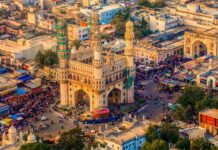Kohima is the hilly capital of Nagaland, which is one of the seven sister states of northeast India. ‘Kohima’ is the anglicized name given by the British, the original name being ‘Kewhira’ derived from the Kewhi flowers found in the region.
Famous for its ethereal environment and untouched beauty, it is a land of folklore passed down through the ages. Situated at a height of 1500 meters above the sea level, it is endowed with quaint hills, emerald forests and a picturesque landscape. It is the go-to place for all adventure enthusiasts as it is ideal for trekking, camping and hiking.
Kohima was built by the British and is home to the Naga and Kuki tribes who can amaze one with their independence and a mystical and colouful culture that surrounds them.
One of the most popular sites here is the Commonwealth War Cemetery which homes thousands of soldiers of the World War II. Other than that, the city has a lot more to offer to its visitors – a museum, zoo, sanctuary, valleys, self-governing villages and much more.
 HISTORY OF KOHIMA
HISTORY OF KOHIMA
Kohima was initially inhabited by the Angami Naga tribe, one of the largest of its kind. In around 1840, the British started the incursions to take on the territory which was met by stringent resistance by the freedom loving Nagas, who had never been conquered by any empire before.
For this fact, the British took around four decades to capture the comparatively tiny territory. Kohima was the first seat of British modern administration as the headquarters of Naga Hills District in 1879.
It has also been etched in history for the infamous Battle of Kohima during the Burma Campaign in 1944 at the time of World War II. It was a 64-day-long war with the Japanese who eventually lost to the Allies. Afterwards, post-independence, when Nagaland became a full-fledged state in 1963, Kohima was made its official capital.
Kohima fosters both traditional Naga cuisines as well as a number of options for continental and Chinese food and flattering choices for vegetarians as well.
The local cuisine is dominated by spicy, colorful, delicious and a bit adventurous non-vegetarian preparations. Pork, beef, mutton, chicken and also lots of jungle animals are eaten here.
Delicacies prepared with bamboo shoots, ginger, Naga King chilly are also found. Also, Nagaland is a dry state and hence you won’t easily find beers and other alcoholic drinks. However, locally brewed Rice beer is available at places.
PLACES TO VISIT
Dzukou Valley and Japfu Peak
Located some 25 km south of Kohima, Dzukou Valley and Japfu Peak offer one of the most breath taking landscapes of the continent.
Nagaland is called the ‘Switzerland of the East’ and Dzukou valley and Japfu Peak provide solid proof to that moniker. Dzukou valley and Japfu Peak trek is one of the most beautiful and mesmerizing treks you can find in the country and is an absolute must for all trekking enthusiasts.
The Japfu Peak, standing tall at 3,048 meters, is the second highest peak in Nagaland and provides the perfect vantage point for admiring the heavenly beauty of the Dzukou Valley.
Dzukou valley is also known as the “Valley of Flowers of the east” and is quite a sight to behold, when in full bloom. Dzukou Valley is considered to be the base of the crater of an old volcano and seems like covered with a carpet of the most exquisite species of grass and flowers.
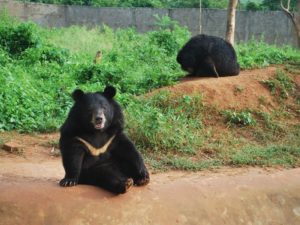 Kohima Zoo
Kohima Zoo
The zoo houses the state bird, the rare Tragopan, and the state animal, the wild buffalo. The zoo is created on a hill and the hill has been beautifully used to provide natural landscapes for the animals.
The golden langurs and the Blythe’s tragopan are the biggest attractions of the zoo. A section of the zoo has been turned into a special area for kids with a play zone and fun facts about the animals.
Kohima Museum
Nagaland is truly an amalgamation of various tribes! The Kohima Museum portrays the traditions and culture of the many tribes of the state. The museum holds many unique artifacts related to different tribes of the region.
All of 16 tribal groups are a part of Nagaland and all of them are represented here. The clan motifs, colorful traditional dresses, dialect, practices and traditions are displayed at the museum
Shilloi Lake
A beautiful foot shaped lake in the heart of the Patkai range of Nagaland, Shilloi Lake is a very picturesque destination with a verdant valley surrounding it from all sides.
The lake is considered very important by the folks of Latsum village as it is believed that the spirit of a holy child rests in the bottom of the lake. It is one of the reasons why no one fishes or uses the lake water for drinking and irrigation.
The city of Kohima has had a really violent past and now, the city is making up for it. This cathedral too stands out in the city, providing a beacon of hope and peace.
The Japanese had contributed to the making of this church after the Battle of Kohima so as to offer prayers in the memory of their loved ones. This is the largest cathedral in all of Asia and is also an amazingly beautiful piece of architecture.
Ntangki National Park
Located 35 km from Dimapur, this sanctuary is said to be the home to a whole variety of animals such as elephants, wild buffalos, the rare Hoolok gibbon, sloth bear, barking deer, black storks and a lot more! The national park takes pride in its 200 sq km natural yet protected habitat.
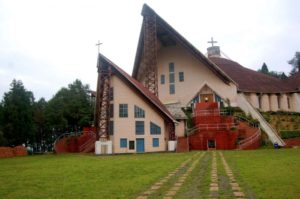 Naga Heritage Village, Kisama
Naga Heritage Village, Kisama
A village situated in the outskirts of Kohima, Naga Heritage Village in Kisama seeks to preserve and promote the culture and traditions of the Naga people. The name Kisama itself is an amalgamation of two Naga villages, namely, Kigwema (KI) and Phesama (SA), and MA (Village).
The government constructed the village to imitate the traditional Naga villages and tribal livelihoods and values. The village is opened to the public for a week in December, during the time of the Hornbill festival. The village is like an open-air museum of Naga culture and traditions. It is a concerted effort on part of the Nagaland administration to revive and conserve the erstwhile tribal culture of the Naga people who have lived on these lands for millennia.
The best time to visit Kisama is in the first week of December when the village opens up for the Hornbill Festival. The winters in the region do get very cold and good amount of layers of woolens might be needed.
HOW TO REACH KOHIMA
By road: Kohima can be reached easily via road. You can either hire a taxi or drive there yourself. It is also connected to all the nearby cities by regular bus services.
By train: Kohima does not have a railway station. The nearest railway station is in Dimapur which is around 74 km away from Kohima. This station has regular trains from Guwahati and Kolkata. You can hire a taxi from Dimapur to reach Kohima.
By air: The nearest airport is at Dimapur. From there, one can drive up to Kohima
BEST TIME TO VISIT KOHIMA
Kohima experiences cool and comfortable winter with the temperature ranging between 5 and 30 degrees Celsius. Infrequent snowfall is also an occurrence during these months.
The city experiences hot and dry summers. The temperature during this time ranges between 20 and 36 degrees Celsius.
Kohima looks spellbinding during the monsoon as the place is covered with greenery all around. It receives adequate amount of rainfall from July to October and the place generally remains drenched. However, if you do not mind a little rainfall, you can visit Kohima during this time to experience its surreal beauty.

